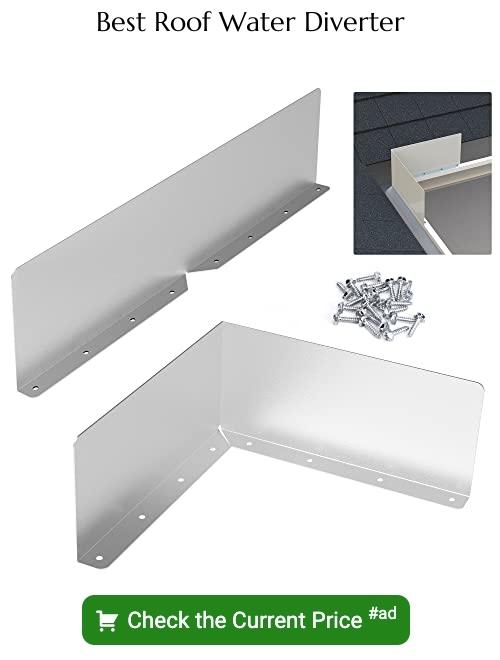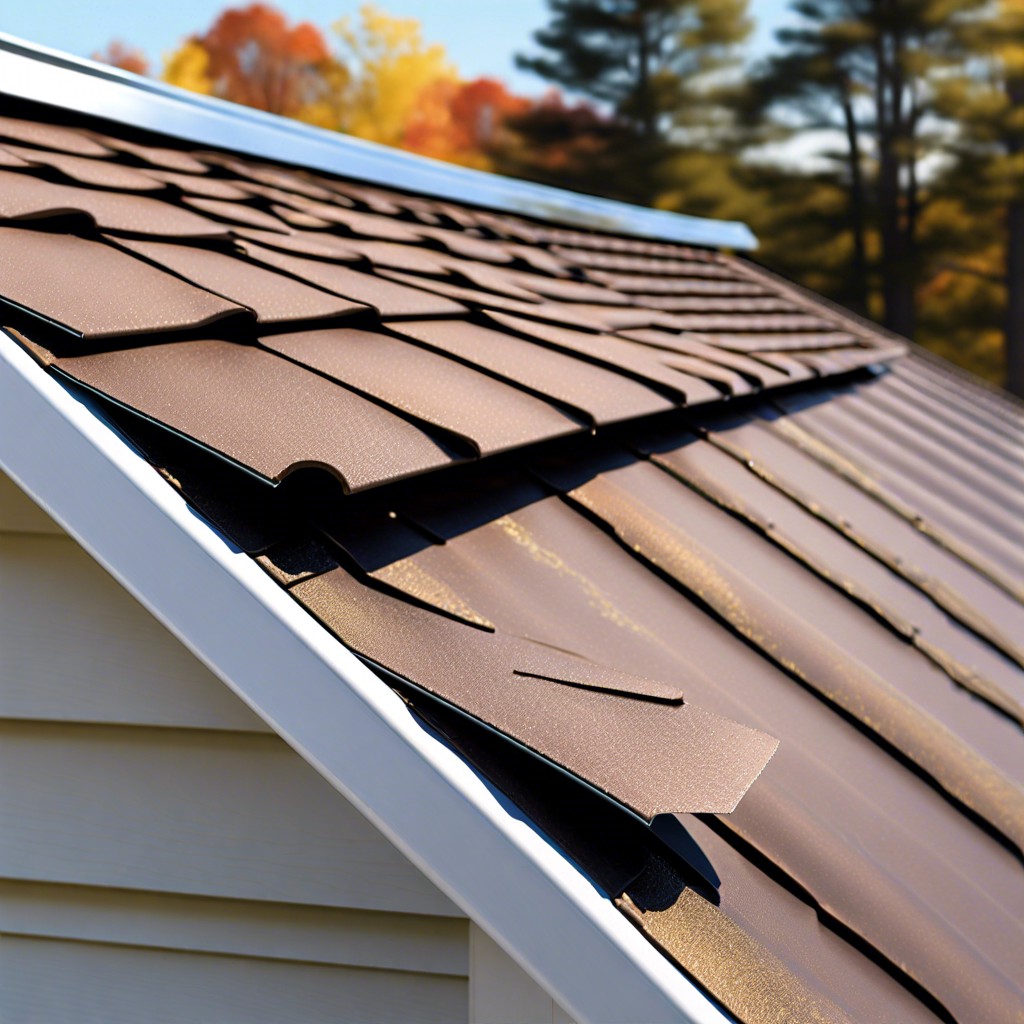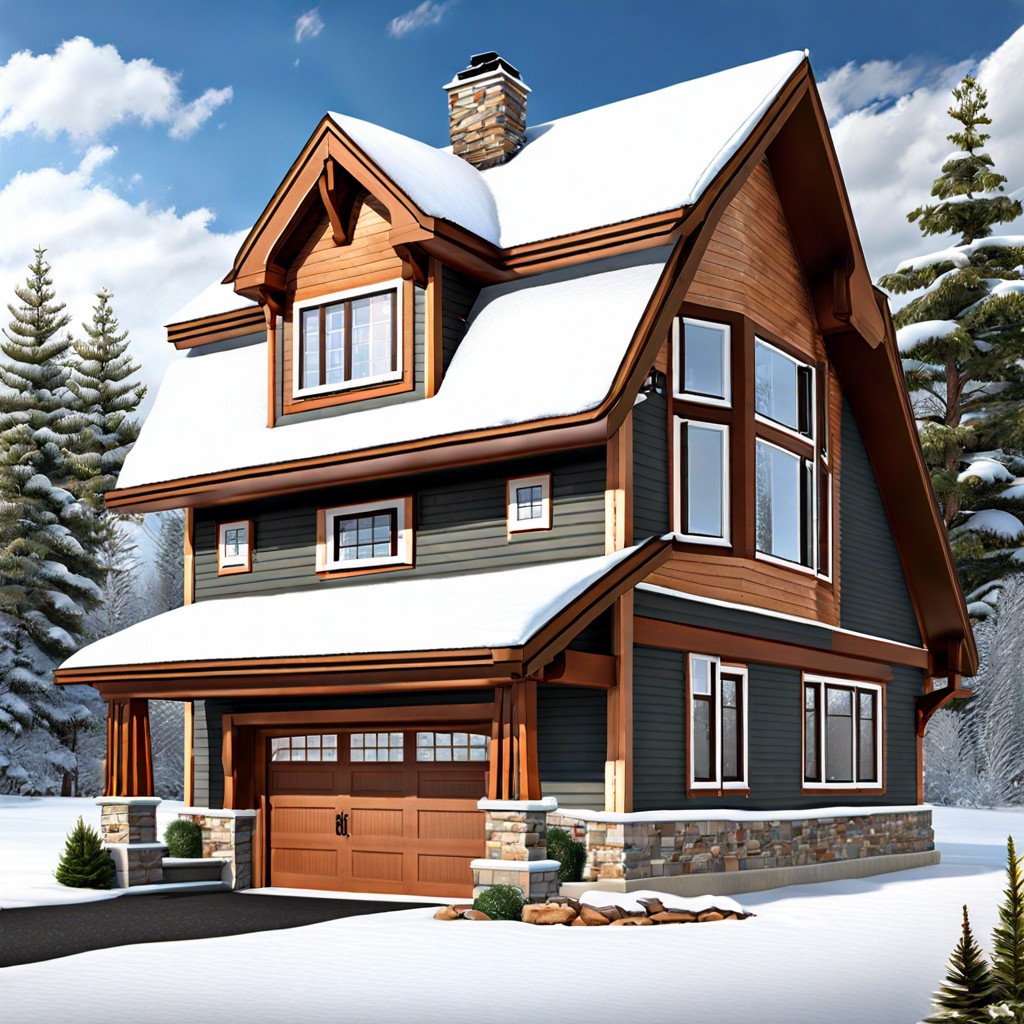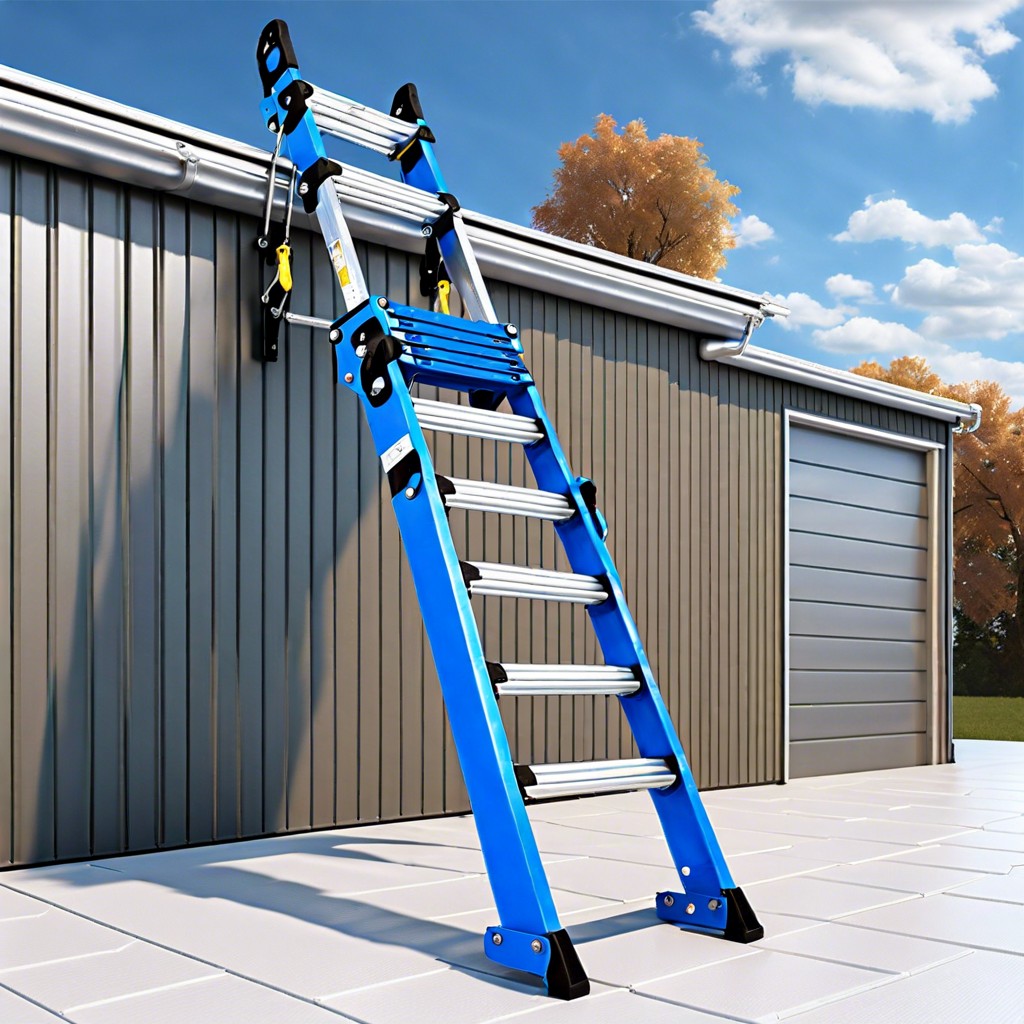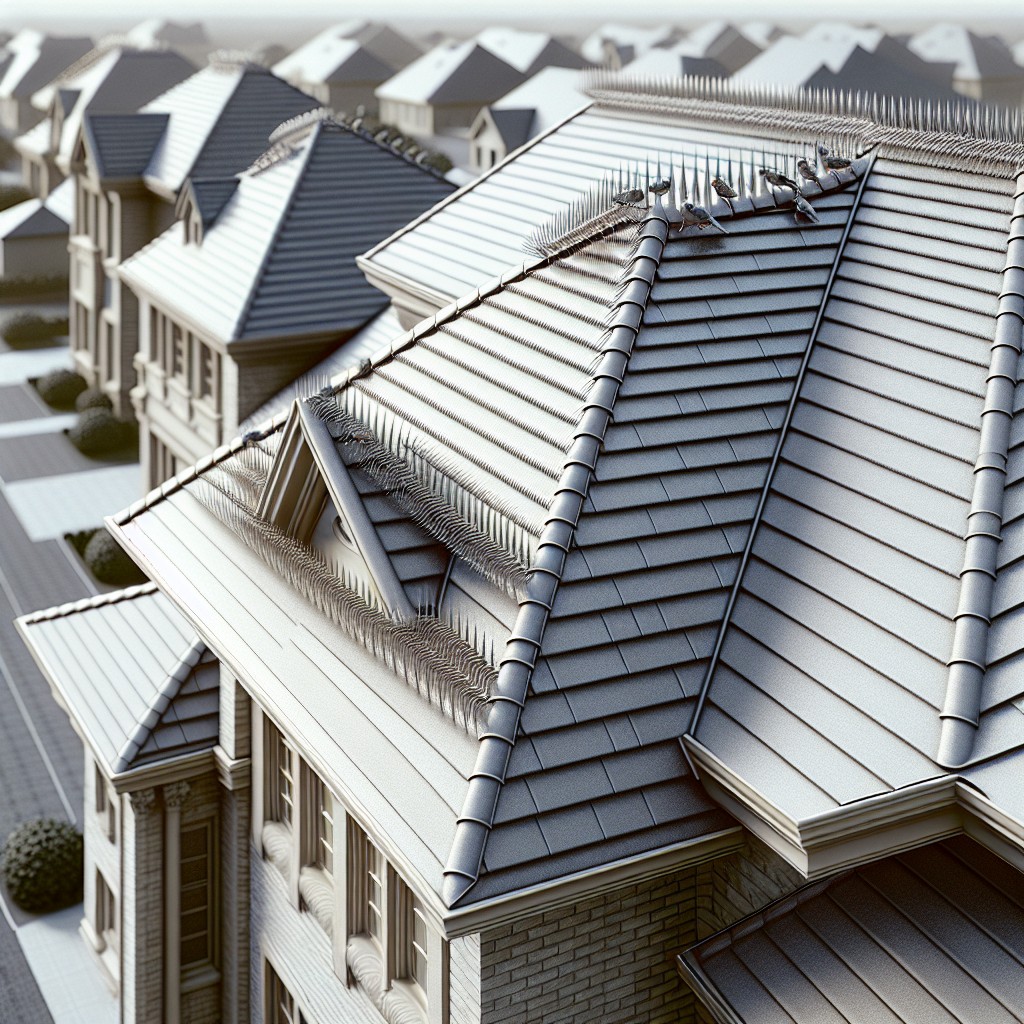Last updated on
Learn effective strategies for managing roof runoff without the need for gutters to protect your home’s foundation and landscaping.
Key takeaways:
- Rain chains: Visually pleasing alternative to traditional downspouts
- Grading: Slope landscape away from foundation to prevent damage
- Drip edge: Metal flashing directs water away from fascia
- French drain: Redirect roof runoff away from foundation
- Rain garden: Eco-friendly area for water to collect and infiltrate
Rain Chains
Rain chains are an elegant and functional alternative to traditional downspouts, guiding runoff from a roof to the ground in a visually pleasing manner. Originating from Japan, these chains can be an aesthetic choice for managing water flow. They’re available in various designs, from simple metal chains to intricate cups or bells, to complement diverse architectural styles.
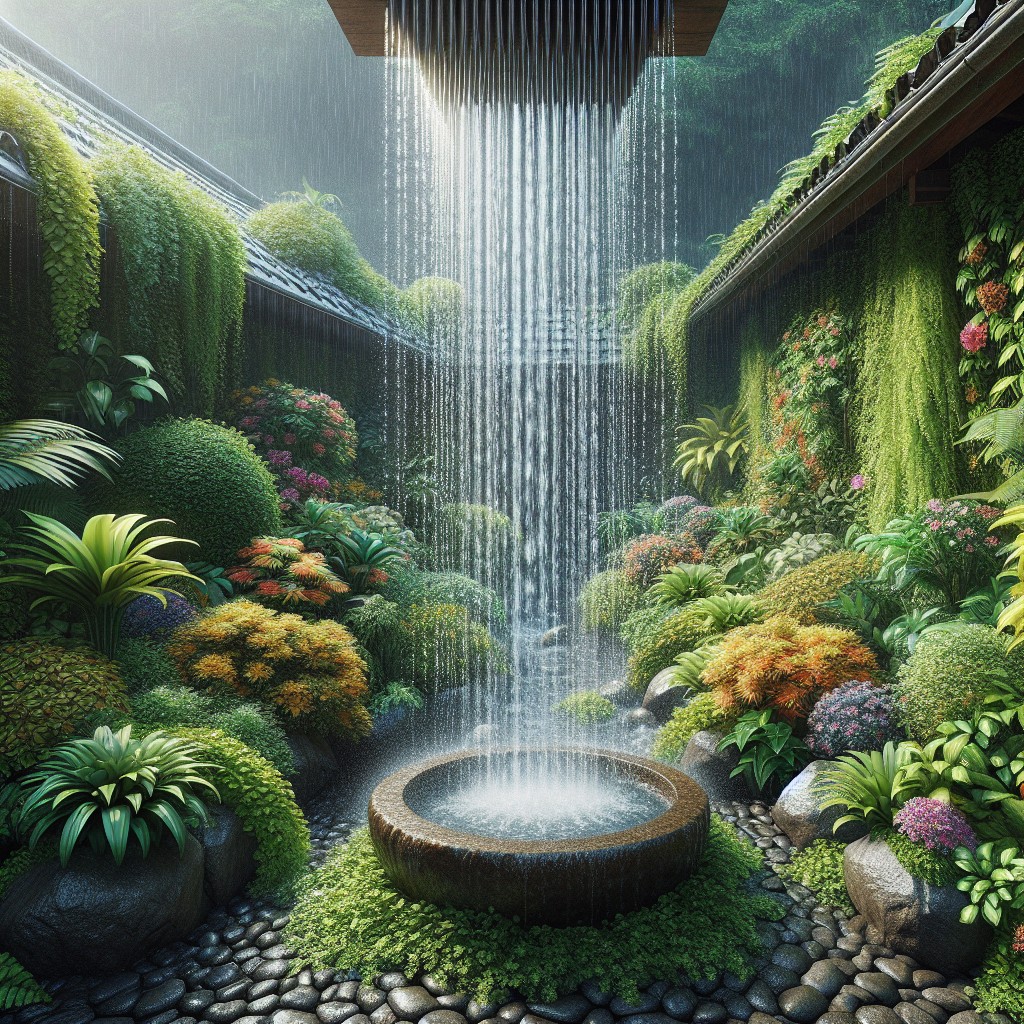
Installation involves attaching a chain to the hole where a downspout would usually connect. As water cascades down the chain, surface tension directs the flow along the pathway of the chain. For better management of water at the base, consider pairing rain chains with a catch basin to reduce the potential for erosion or water pooling near foundations.
Versatility in material selection—from copper to aluminum—allows for long-term durability and weather resistance. Over time, materials such as copper develop a patina that adds character to the exterior of the home. For optimal performance, ensure that the length of the chain reaches the ground or the catch basin below and is secured against wind sway.
Grading
Directing water away from your foundation is essential to prevent moisture damage. Proper landscape grading achieves this by sloping the terrain away from your home. A slope of about 5-10% (which translates to a drop of 6 inches over a distance of 10 feet) is generally effective.
To create this grade, add or remove soil near the foundation and tamp it down to form a gentle, consistent slope.
Adding dense plantings of shrubs and grass can also help. The roots stabilize the soil and absorb water, reducing the speed and volume of runoff.
During installation, it’s crucial to compact the soil as loose soil can erode over time, altering your carefully constructed slope. Regular maintenance checks are also recommended, particularly after heavy rainfall, to ensure the gradient remains effective in channeling water away from your home.
Drip Edge
A drip edge is a metal flashing installed at the edges of a roof to direct water away from the fascia and into the drainage area. This small yet critical component ensures water flows off the roof in a controlled manner, preventing water from seeping under the roof covering and causing damage to the underlying wooden structures.
Here’s how a drip edge functions:
- Protection: By extending slightly beyond the roof decking, the drip edge prevents water from moving back towards the wooden fascia boards, helping to prevent rot.
- Support for Shingles: It provides a sturdy edge for the first row of roof shingles to rest on, which helps maintain shingle integrity and prevent curling.
- Pests Deterrent: The metal barrier also serves as a deterrent to insects and small animals that might try to find their way under the roofing materials.
When selecting a drip edge, consider the climate, as areas with heavier rainfall might need a broader flange for better water diversion. Additionally, ensure that the drip edge material is compatible with the roofing and gutter system to prevent corrosion. Proper installation is crucial to avoid gaps where water could penetrate, hence always align the drip edge snugly against the fascia boards and under the roofing felt.
French Drain
French drains provide an efficient solution for managing roof runoff by redirecting water away from your home’s foundation. This subsurface system utilizes a perforated pipe encased in landscape fabric and surrounded by gravel. As water trickles down through the gravel, it enters the pipe and is channeled to a suitable discharge point.
To implement a French drain:
- Determine the best location for your drain, ensuring it follows a natural slope away from your home.
- Excavate a trench approximately two feet deep and six inches wide, with a slight decline to facilitate water flow.
- Lay the landscape fabric in the trench, extending it up the sides to prevent soil from clogging the gravel.
- Install a perforated pipe along the bottom of the trench, with the holes facing downward for optimal drainage.
- Backfill the trench with gravel until the pipe is fully covered, then fold over the excess fabric and complete the fill with topsoil or additional gravel, depending on your aesthetic preference.
A French drain system offers a discreet and effective means of managing water flow, safeguarding your home from potential water damage.
Rain Garden
Rain gardens offer an eco-friendly solution for roof runoff management by creating a designated area where water can collect and naturally infiltrate back into the soil. Placed strategically, these gardens are not only functional but also enhance the landscape. They consist of native shrubs, perennials, and flowers planted in a small depression, which sometimes may be underlain with a gravel and sand bed for improved drainage.
When designing a rain garden, consider the following:
- Location: Ideally, situate the garden at least 10 feet away from the foundation to prevent moisture issues.
- Size: The area should adequately correspond to the size of the roof and the volume of runoff.
- Soil Type: Amend the soil as necessary to ensure it can absorb water within 24-48 hours, avoiding any prolonged standing water.
- Plant Selection: Opt for native plants that are well-adapted to local climate and soil conditions and can thrive in both wet and dry periods.
- Maintenance: Regular weeding and mulching will help maintain its effectiveness and appearance.
By incorporating a rain garden, not only are you reducing the potential for erosion and water damage, but you’re simultaneously creating a habitat for wildlife and reducing the burden on stormwater systems.
